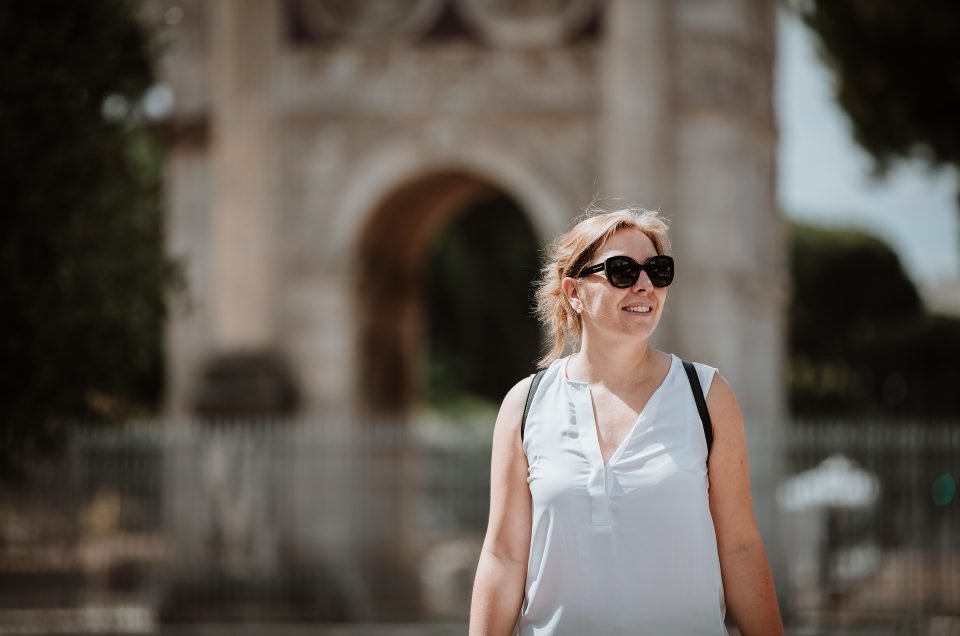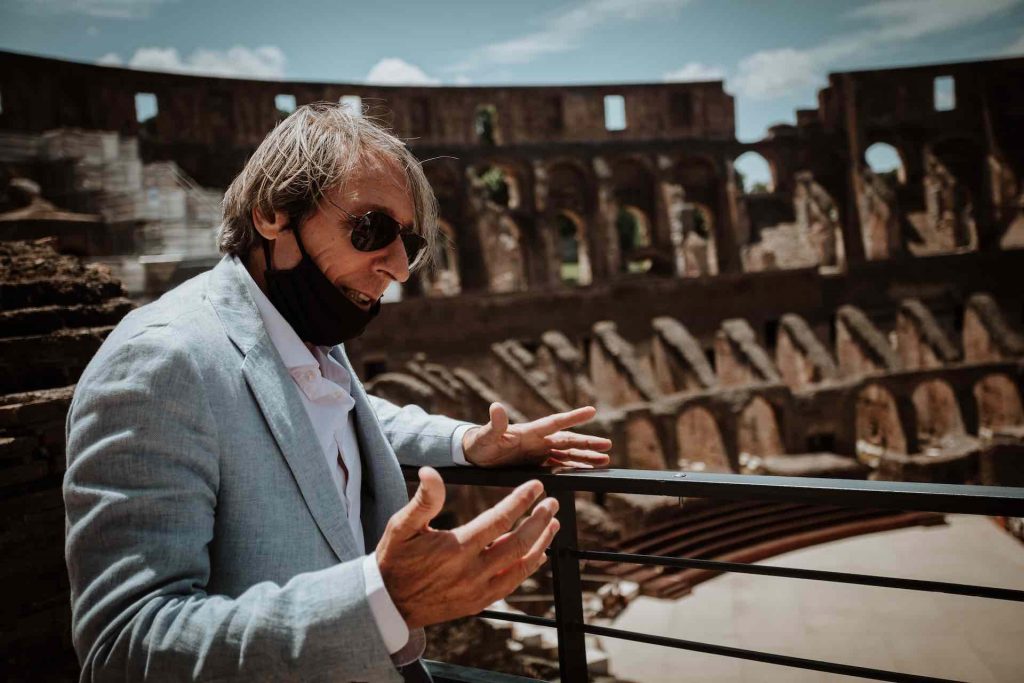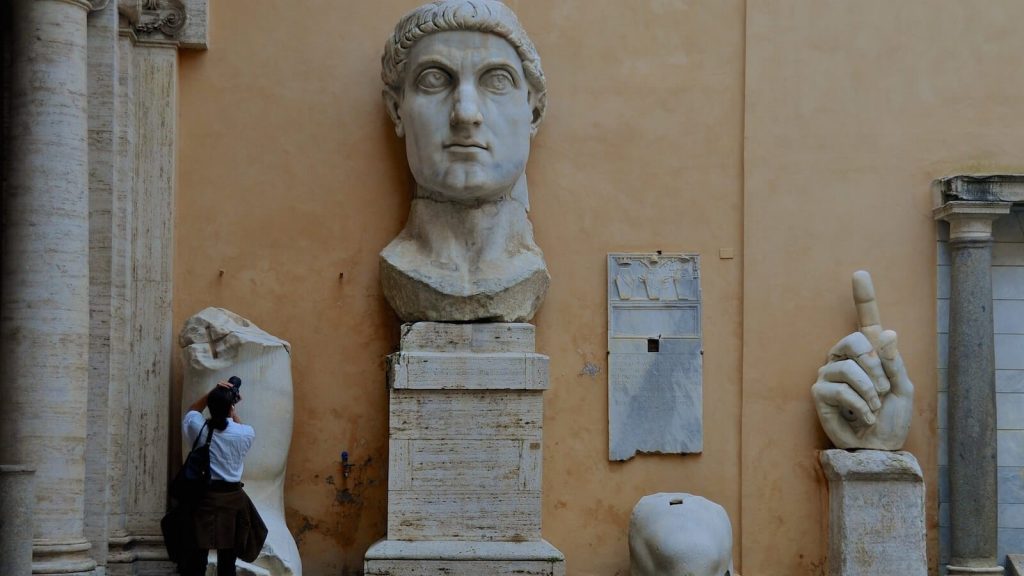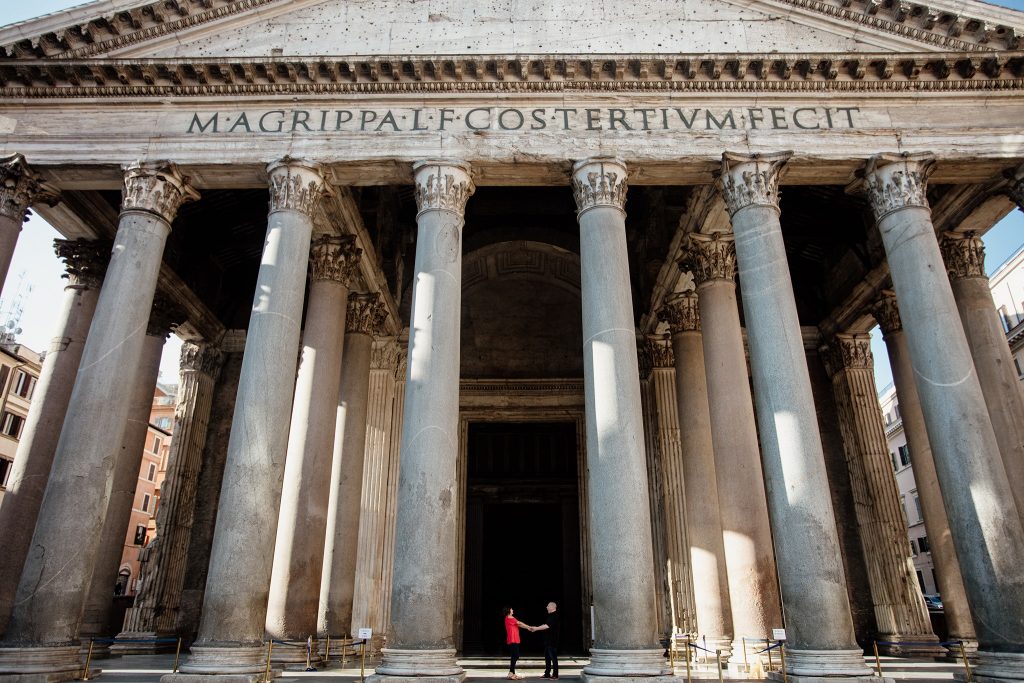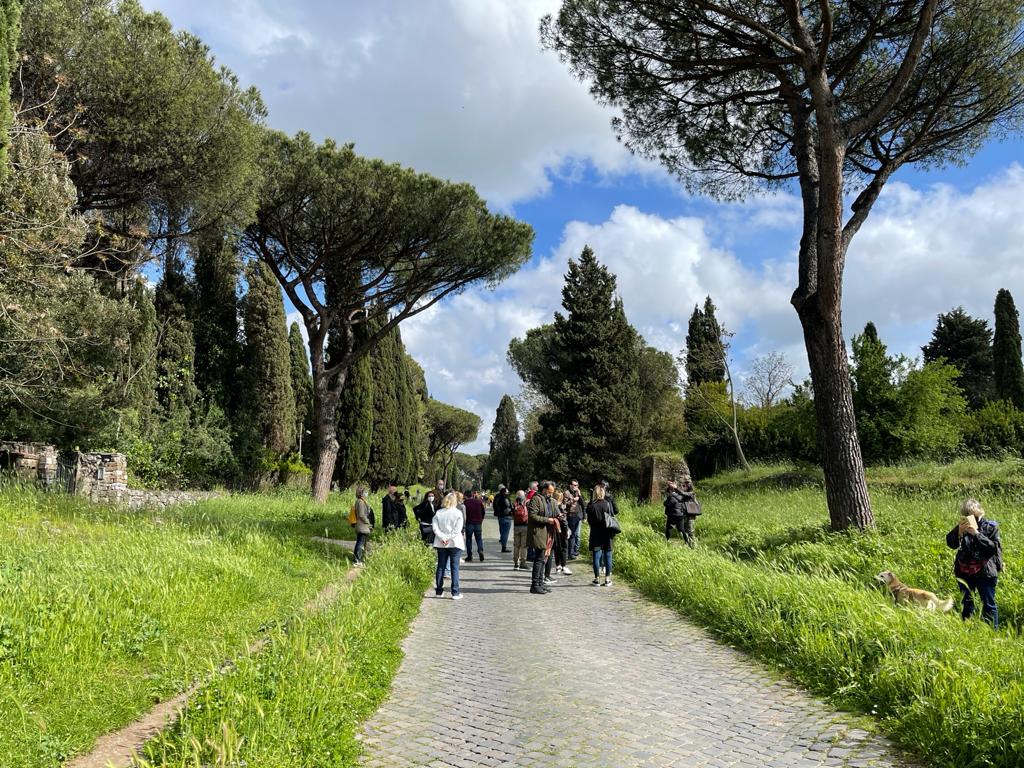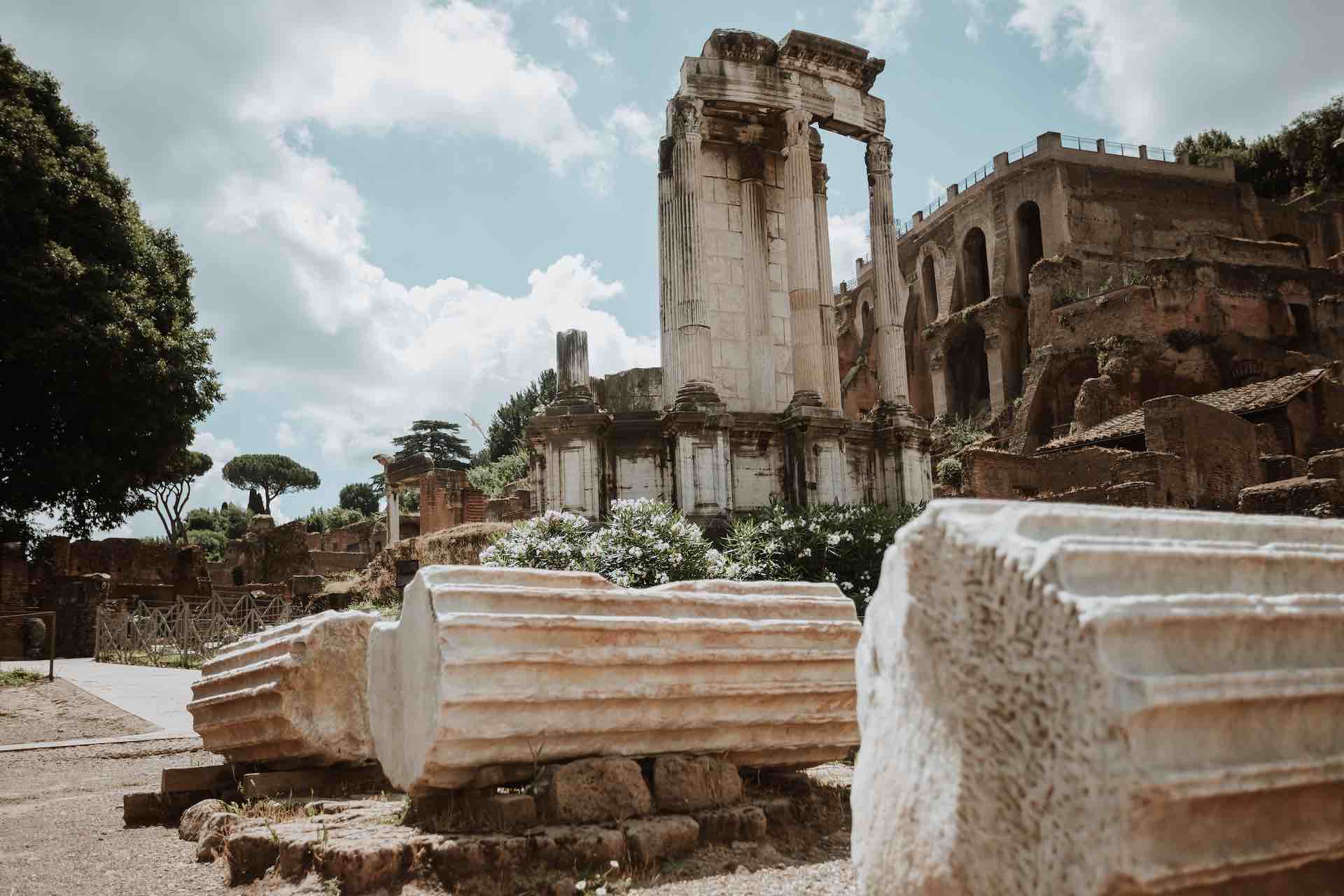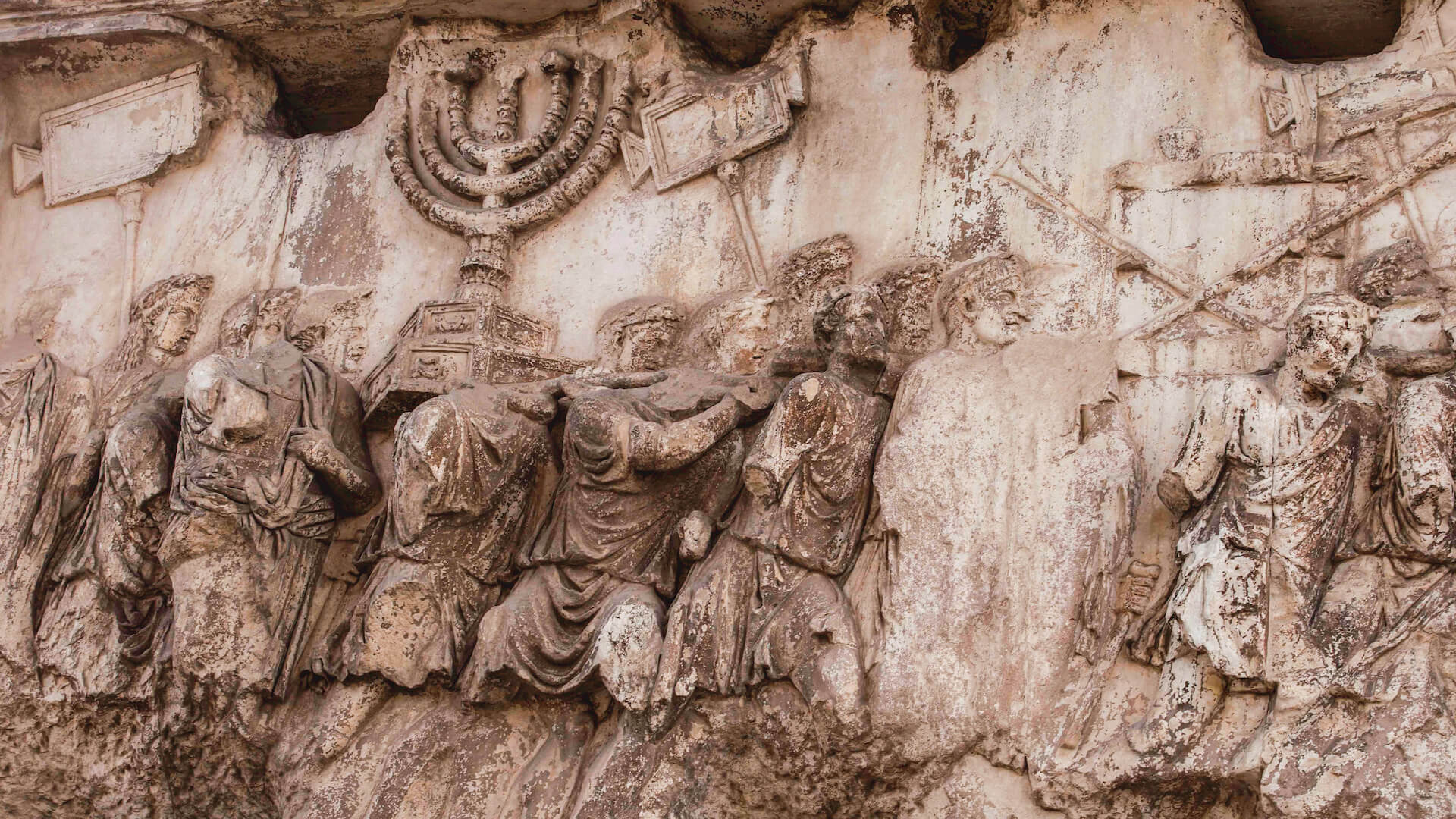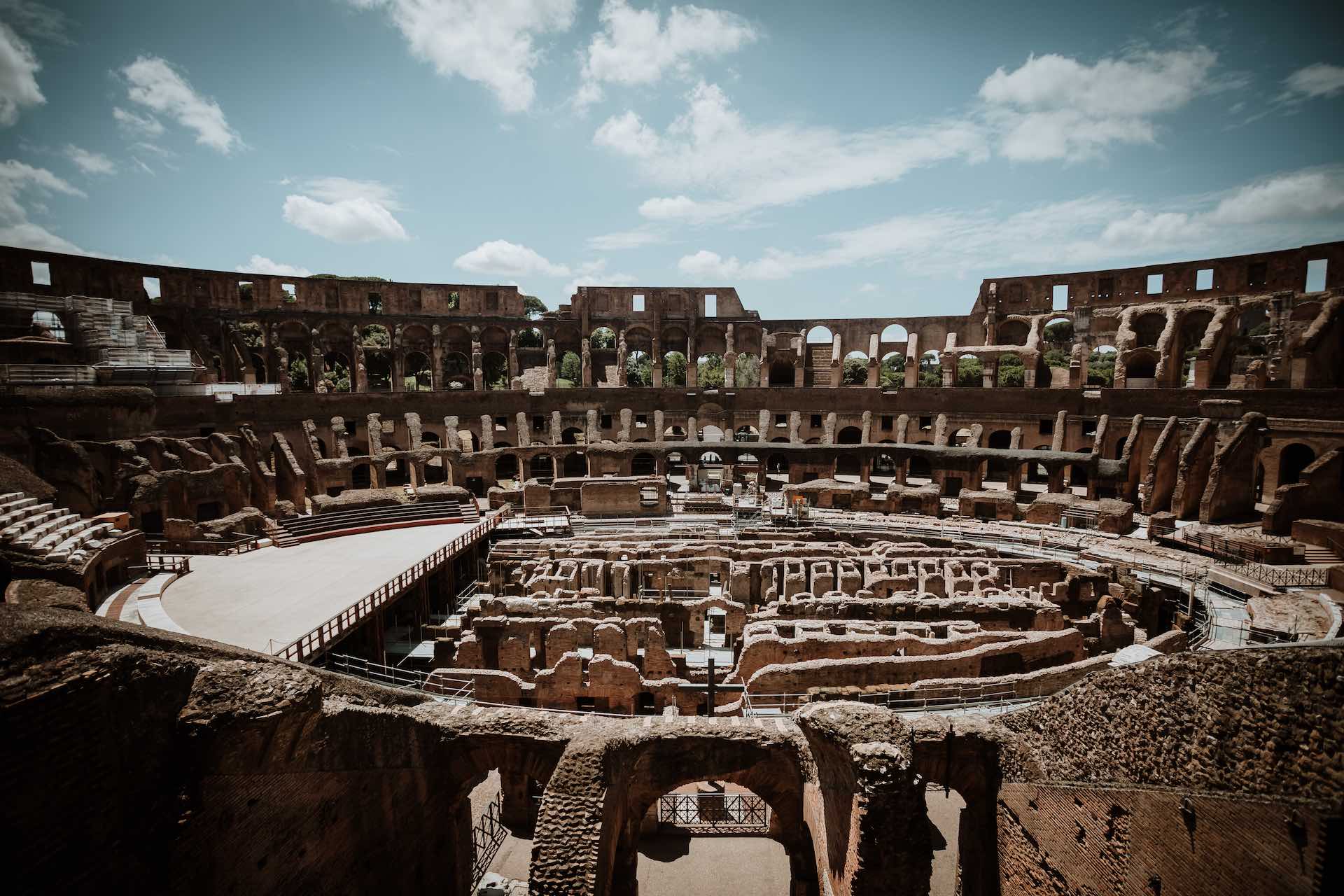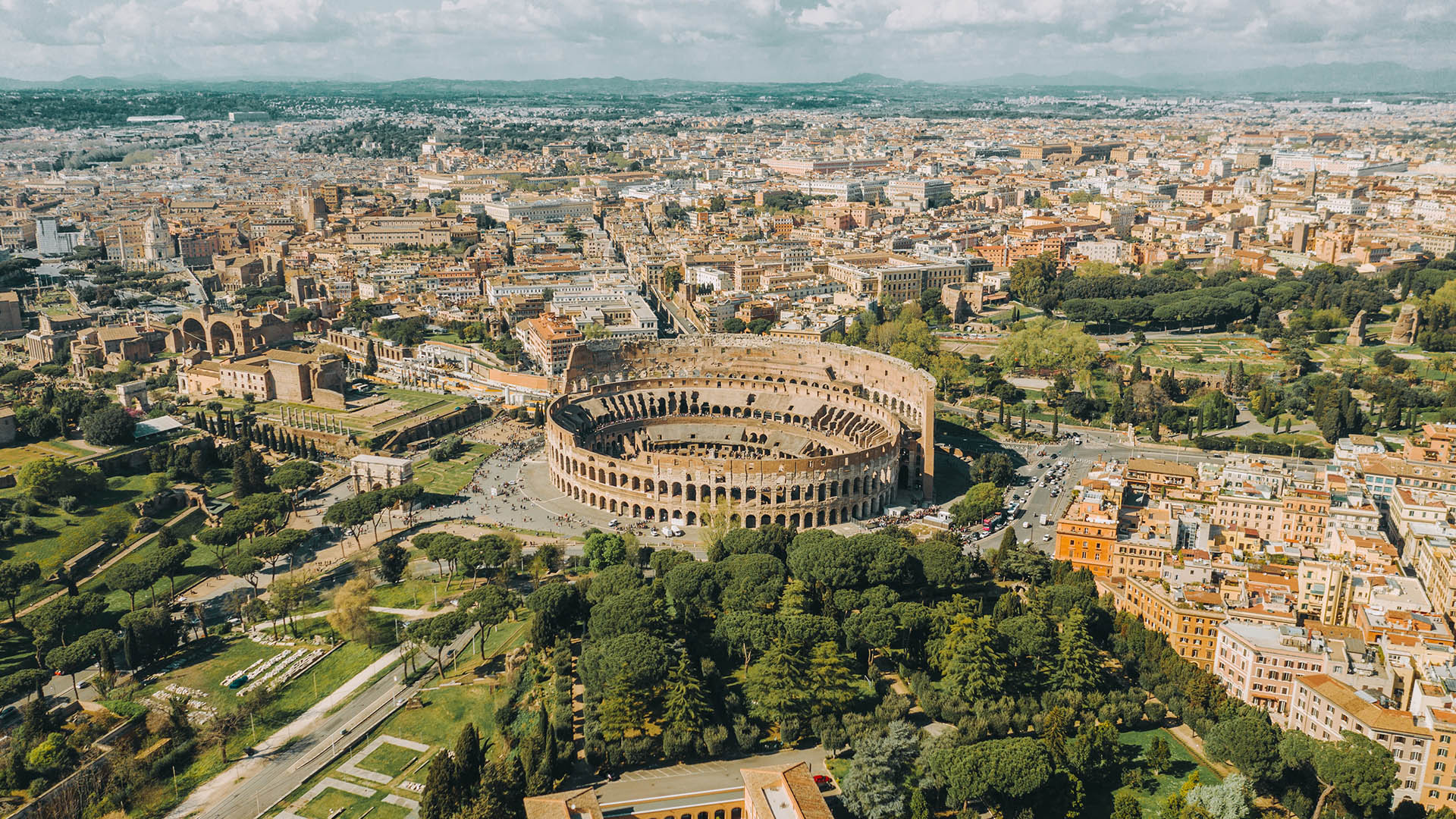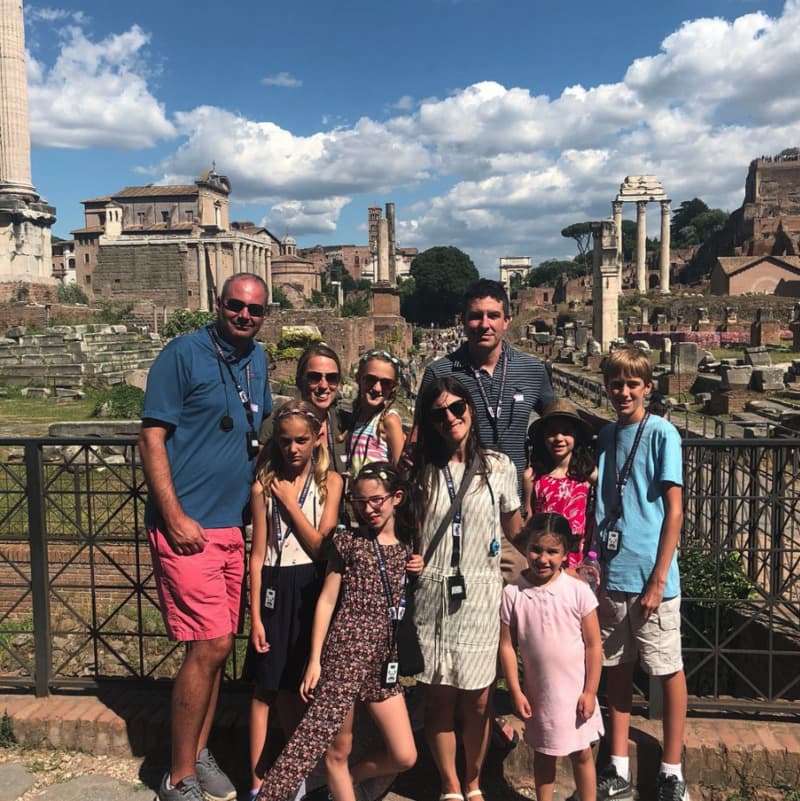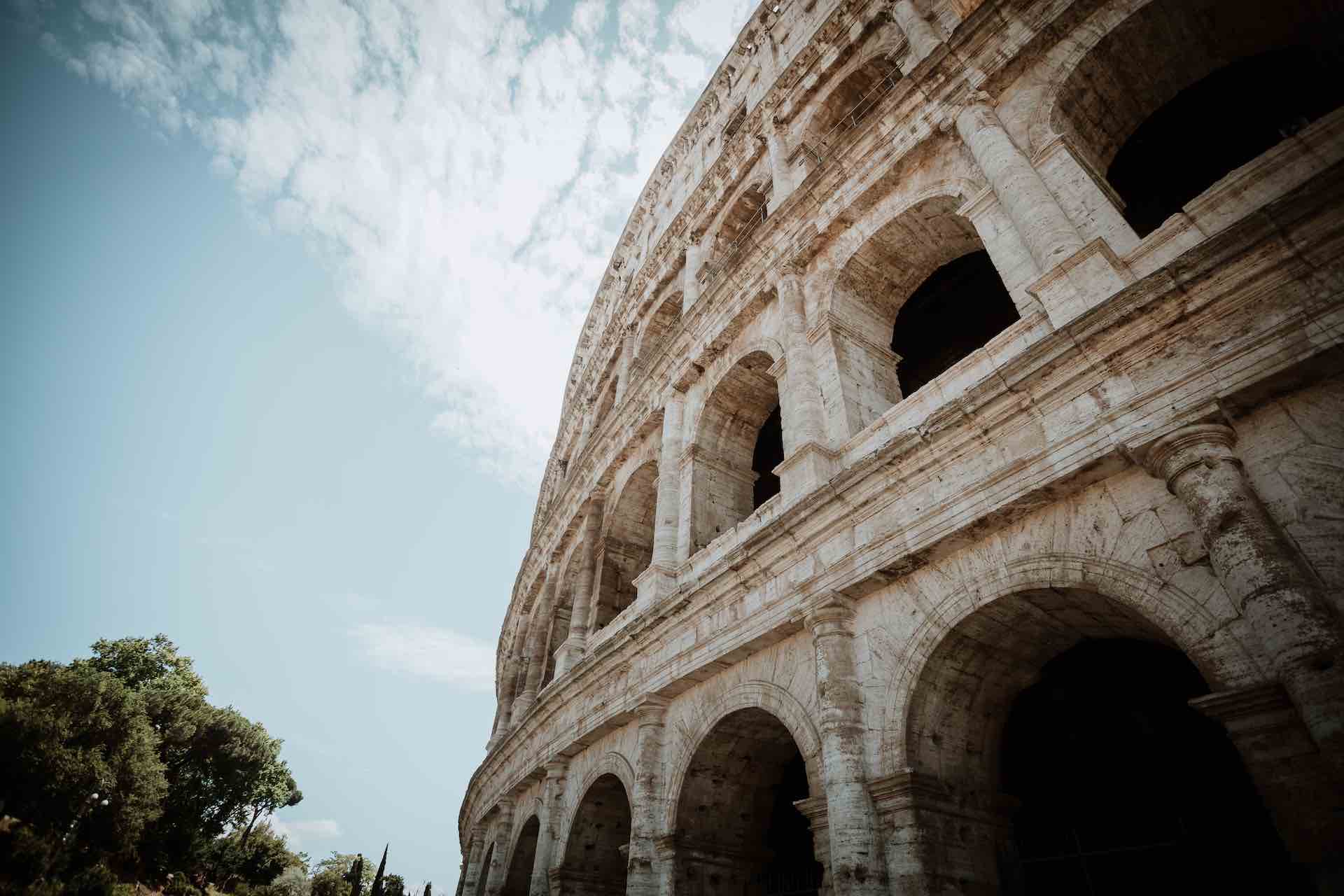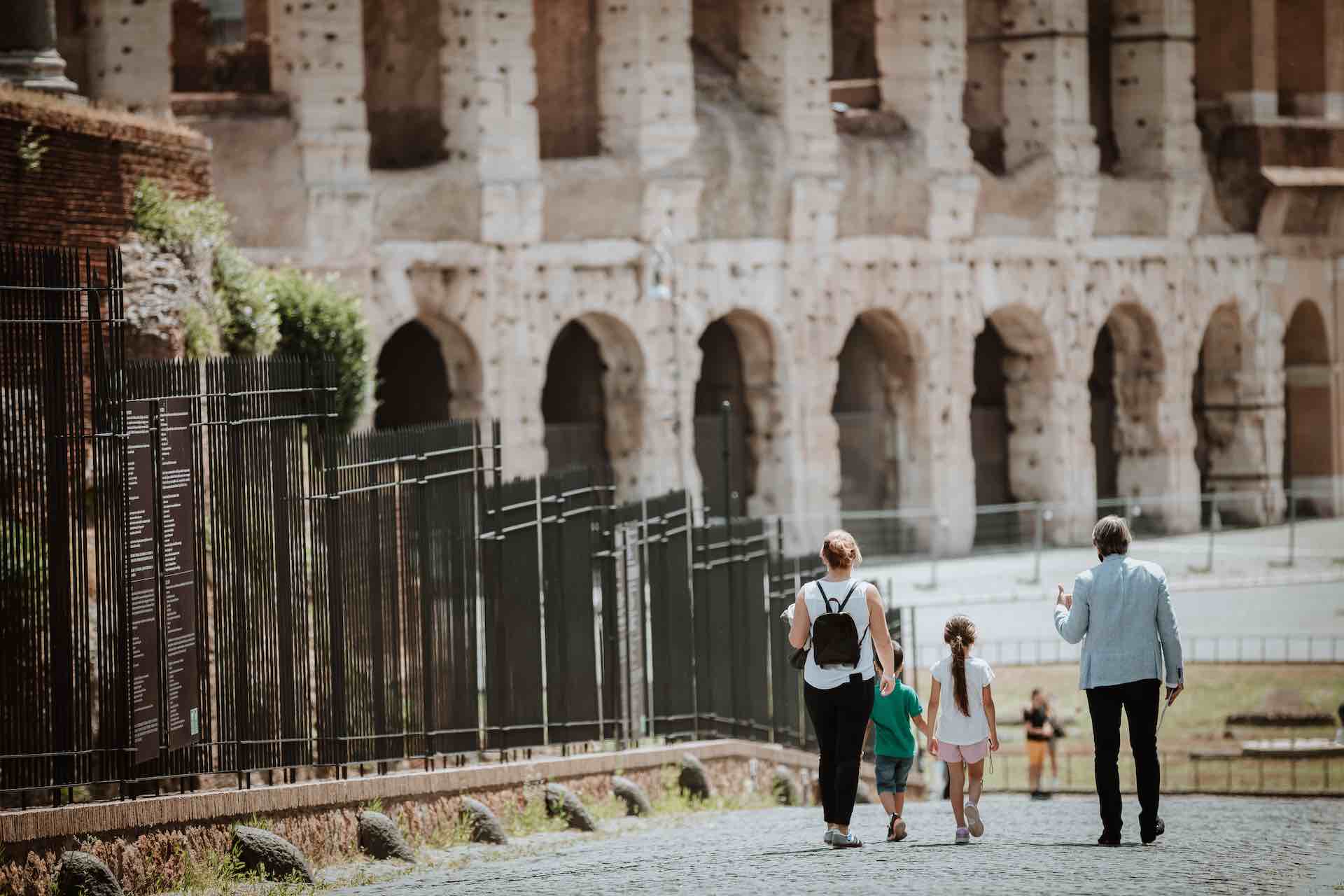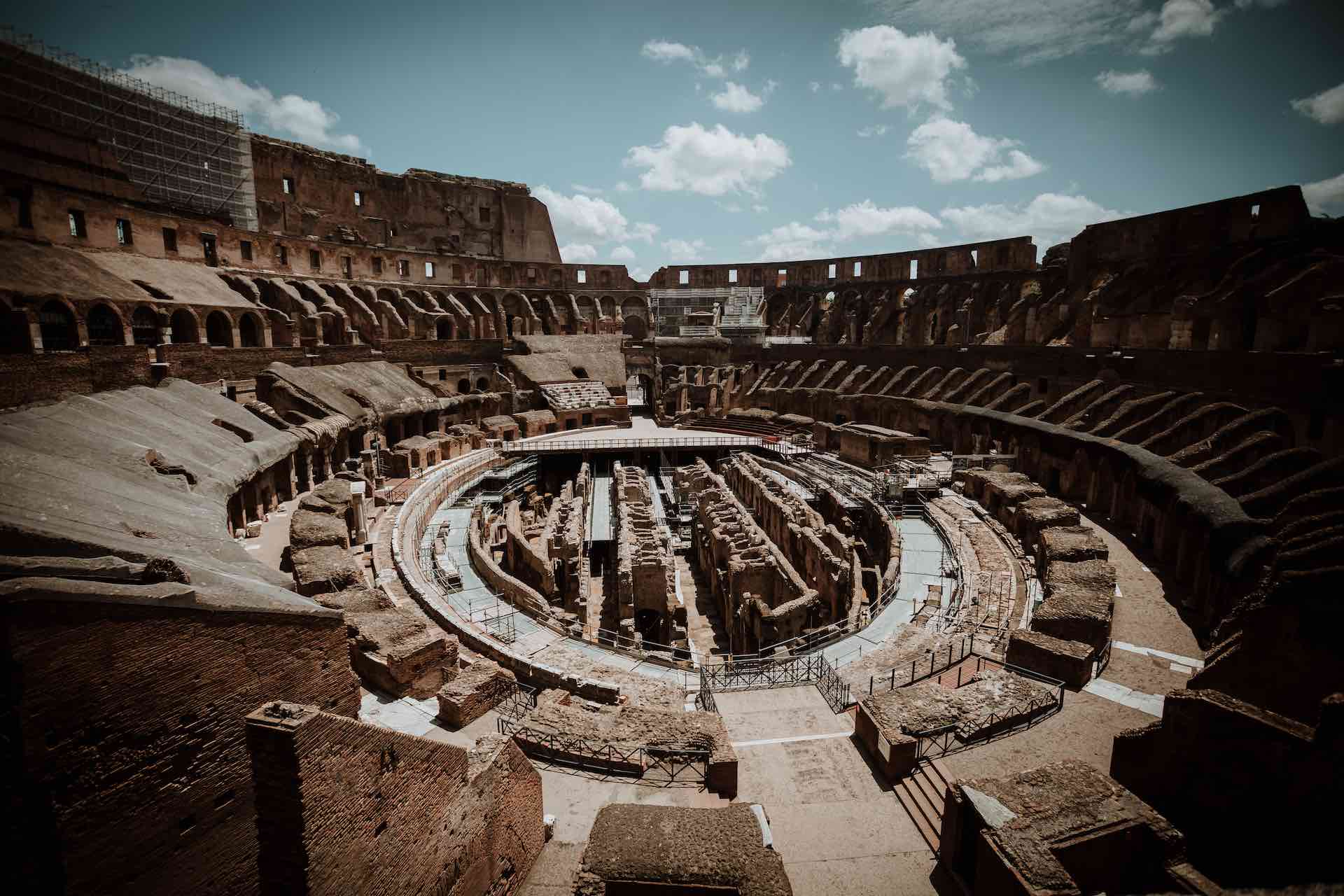The essentials in a few days
Visiting Rome, a city bursting with history and magnificent monuments, is an unforgettable experience for anyone. To help you discover all the main places of interest and better plan your route through the Eternal City, here is the guide of things to do and see in Rome. Whether you’re a solo traveller, couple or a family, Rome is the ideal capital to spend a weekend of 2 or 3 days, above all because the city can be visited very easily on foot. So come and join us for a classic ancient Rome tour!
Guided tour through ancient Rome
For more than 500 years, Rome was at the heart of the ancient world. The centre of the world (caput mundi, as the ancients called it) has left a considerable amount of stunning attractions and fascinating architecture, from the Colosseum to the Circus Maximus. Exploring the center of Rome is a unique experience, especially if you do it on foot.
Walking through Rome allows you to discover its history. A guided tour includes the most interesting places in classical Rome. This type of tour is perfect to experience the most significant places in Rome with a professional guide and without having to waste any of your valuable time in the queue. Thanks to priority access, it will introduce you to the treasures of ancient Rome including:
- The Colosseum: the jewel of Rome. It was the largest amphitheater ever built under the Roman empire, a must-see in the capital. Up to 75,000 spectators bore witness to gladiator fights and other shows. At night it is even more beautiful!
- The Roman Forum and the Palatine Hill: the Roman Forum is located right next to the Colosseum and was the heart of the ancient city with religious, political and public institutions. Many remains are very well- preserved, including some temples and the Roman curia (Senate House). During the visit, do not miss the Palatine Hill – , the hill on which Rome’s legendary King Romulus founded the city – which houses the remains of the palaces of the Roman emperors.
- The Capitoline Museums: here you can discover the stories behind a wealth of Greek and Roman objects and masterpieces.
- The Arch of Constantine: the Arch of Constantine is the last triumphal arch built in the Eternal City and it is located a few meters from the Colosseum. It was built in 315 AD in honor of the Emperor Constantine 1st and his victory against fellow emperor Maxentius in 312 at the battle of the Milvian Bridge. Recycled from the material of other monuments, its marbles and bas-reliefs powerfully symbolise the victories of the emperors and the strength of the empire.
- The Pantheon: Rome’s best-preserved temple is an ancient religious building situated right in the center of the city. The original Pantheon was built in 27 BC, but that’s not the building you see before you today (you’ll find out why on one of our classic tours!). In the 7th century, it was converted into a Christian church. To date it is the only building dating back to ancient Rome that is still perfectly intact.
- Trajan’s Column: Trajan’s column is a Doric column 40 meters high and is the only trace of the Trajan’s Forum surviving intact., It is located at the beginning of Via dei Fori Imperiali and. is truly unique because it is decorated with a 200 metre-long illustrative frieze that forms a spiral around the column.
- Baths of Caracalla: Caracalla’s Thermal Baths are an important place in ancient Rome. They are the remains of one of the largest thermal installations of antiquity. They were a real center of relaxation and recreation: home to a library, gardens, sports areas and places where to eat. The thermal baths were, obviously, a true architectural jewel of the time but they also had very sophisticated heating, water and sewage systems.
- The catacombs: there are several networks of catacombs in Rome, the best known are the catacombs of San Callisto, San Sebastiano, Priscilla and Domitilla. The catacombs are a network of underground galleries used to bury the dead. From the 2nd to the 5th-century pagan citizens, Roman Jews and early Christians were buried there. These underground cemeteries are rich in paintings and frescoes which magnificently represent the transition from a secular Roman society to a Christian society during the first centuries AD.
- Via Appia Antica: the Appia Antica is certainly the best known and most beautiful of the ancient routes issuing from the Italian capital. Several tens of kilometers long and dating back to the 4th century BC, it is lined by a range of tombs, villas and ruins – all to be admired from the beauty of its ancient cobbles.
- Other ancient sites in Rome: there are many other ancient sites and monuments that deserve a visit: the Circus Maximus, the ruins of Largo Argentina (where Julius Caesar was assassinated), the Pyramid of Cestius, the Domus Aurea, the Lateran Obelisk, and much, much more!
Some of our tips
Exploring Rome’s historic center (and some of its environs) involves spending several hours walking on cobblestones. Therefore, it is recommended to wear comfortable shoes and practical and light clothing.
Walks Inside Rome – Your guided tours agency
Walks Inside Rome has been specialising in unforgettable small-group and private tours since 1999. Our goal is to provide our clients with the highest quality tour guide services in art, history, food, and fun in Italy’s most spectacular destinations. We are open 7 days a week and we provide a variety of exciting, engaging, and educational tours for first-time visitors and discerning travelers across the Bel Paese.
If you are interested in our guided tours, contact us to develop a tour program for Rome and walks in its surroundings, private or collective visits at your convenience. Fill out the form on our website, send us an email, call us or chat with us on WhatsApp us for any questions and for any further information about our services. We look forward to meeting you soon so we can start exploring Italy together!

